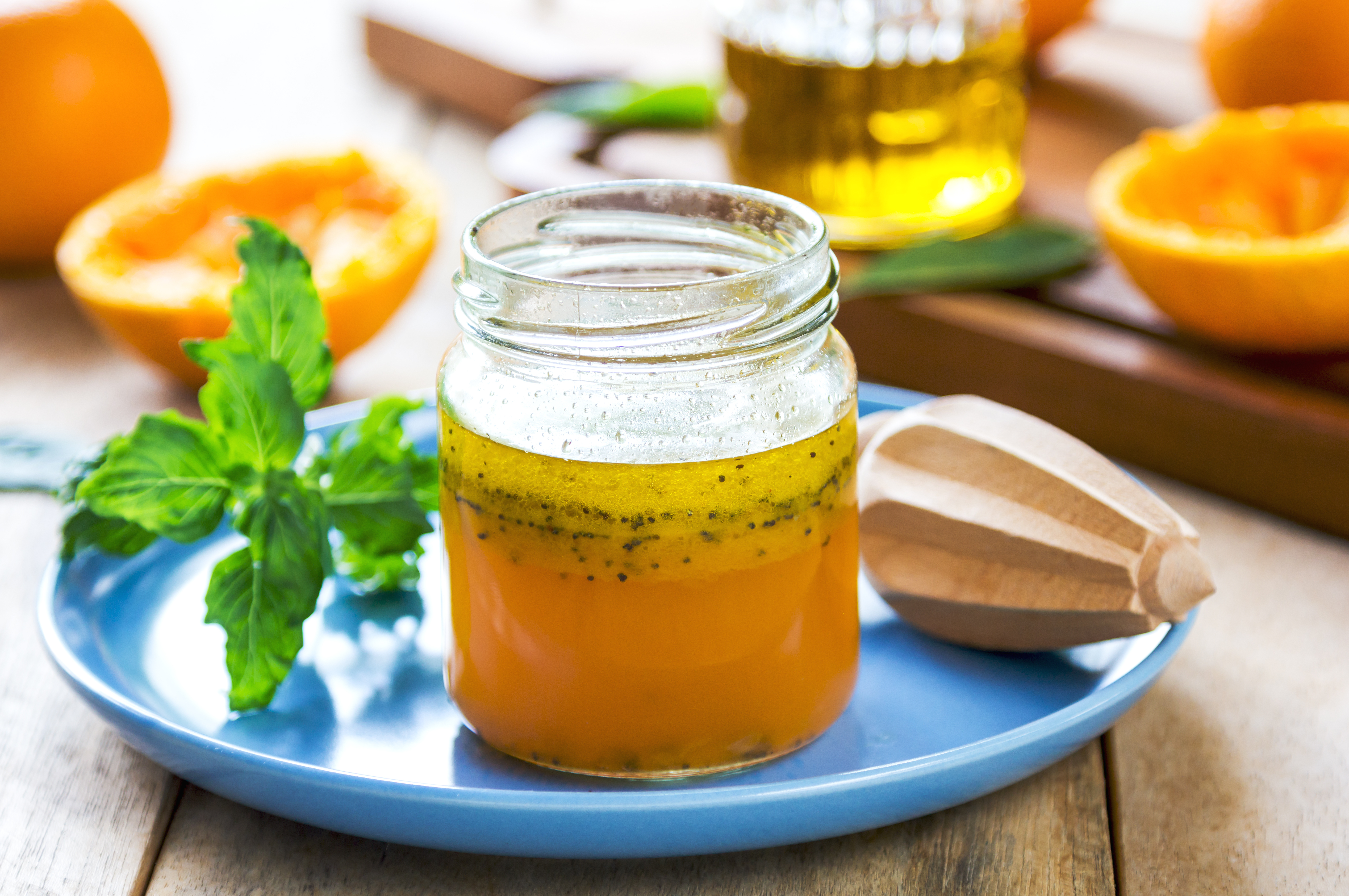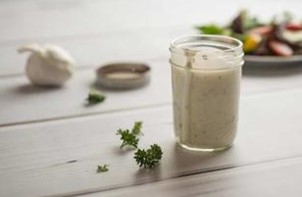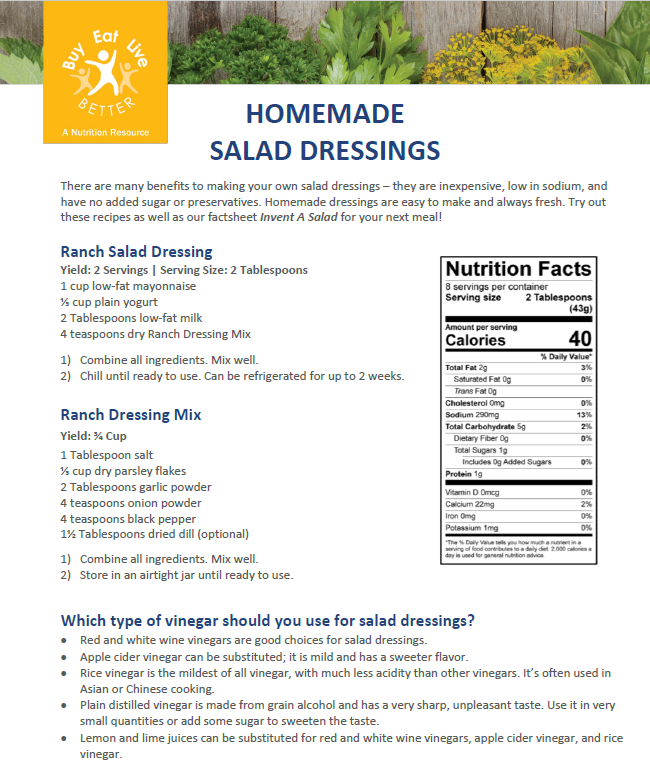Salad Dressings

There are many benefits to making your own salad dressings - they are inexpensive, low in sodium, and have no added sugar or preservatives. Homemade dressings are easy to make and always fresh. Try out these recipes as well as our factsheet Invent A Salad for your next meal!
Which type of vinegar should you use for salad dressings?
- Red and white wine vinegars are good choices for salad dressings.
- Apple cider vinegar can be substituted; it is mild and has a sweeter flavor.
- Rice vinegar is the mildest of all vinegar, with much less acidity than other vinegars. It's often used in Asian or Chinese cooking.
- Plain distilled vinegar is made from grain alcohol and has a very sharp, unpleasant taste. Use it in very small quantities or add some sugar to sweeten the taste.
- Lemon and lime juices can be substituted for red and white wine vinegars, apple cider vinegar, and rice vinegar.
Featured Recipes
Homemade Ranch DressingCollect and measure all ingredients before starting to prepare the recipe.Add the dried onion, salt, garlic powder, and dried parsley to a bowl and stir gently to combine.Add the Greek yogurt and buttermilk and stir until spices are evenly distributed.Chill before serving.Keep leftovers refrigerated and eat within 1 week. |
 |
Vinaigrette Dressing VariationsCollect and measure all ingredients before starting to prepare the recipe.Combine all ingredients in a small container with a lid and shake well or combine in a small bowl and whisk until smooth.Allow to stand for 10 minutes so flavors blend together.Store for up to 2 weeks in a sealed container in the refrigerator |
 |


 You may require
You may require